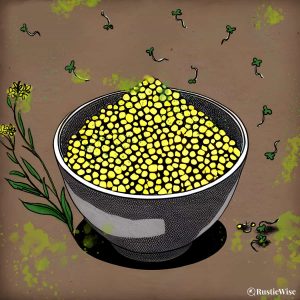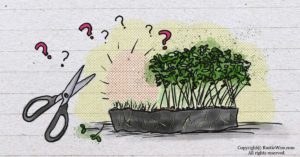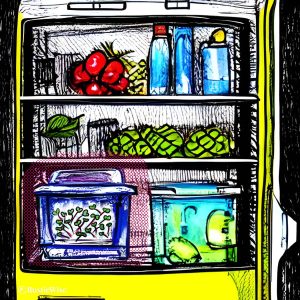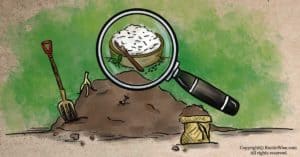At What Temperature Do Microgreens Need To Grow Healthy and Strong?
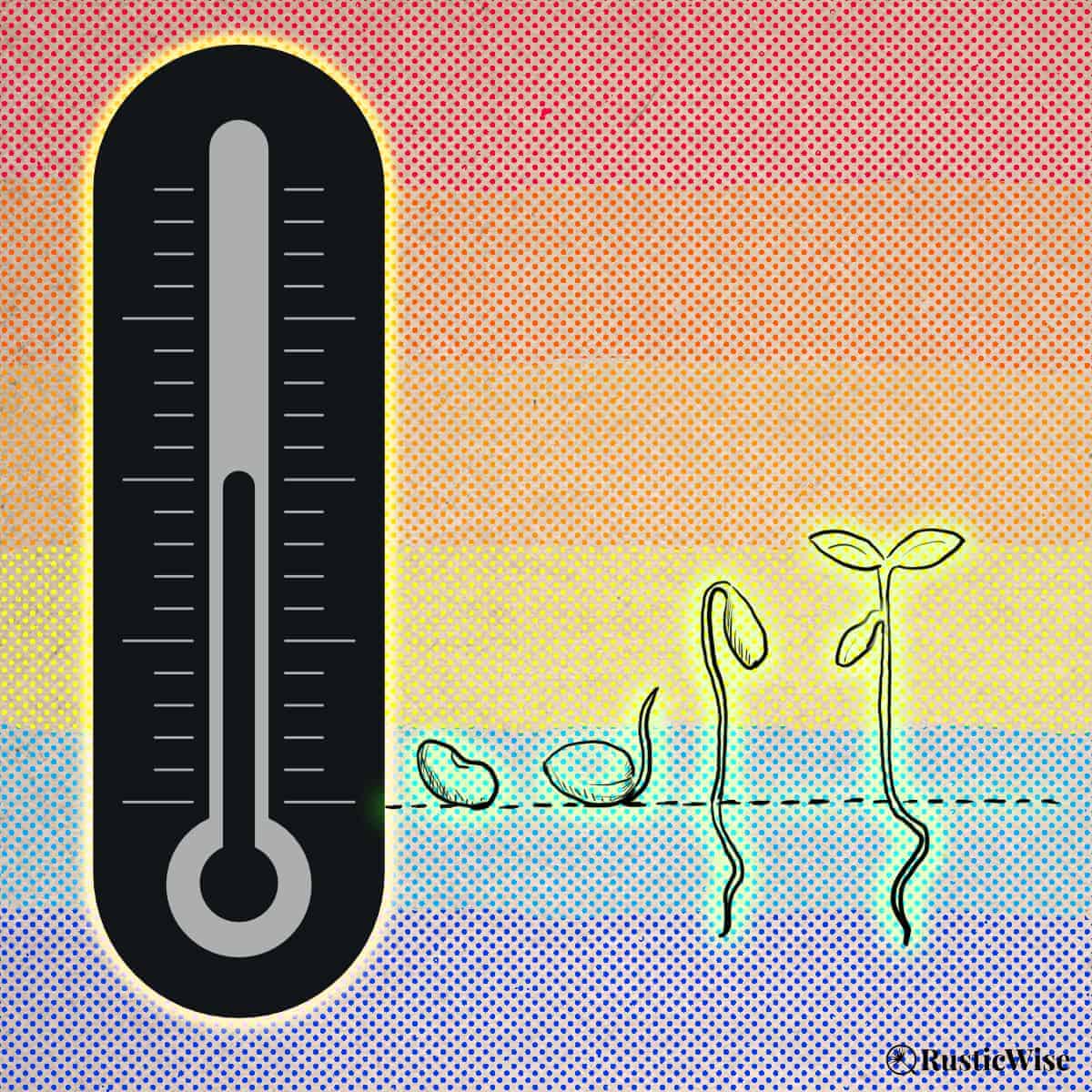
How do you get the best start when growing microgreens? One of the most important things to do is to ensure the greens are kept at a correct temperature (along with adequate humidity, lighting conditions, and airflow).
So what temperature do microgreens need to grow healthy and strong? Microgreens grow well in the ambient temperature range of 65 to 75 degrees Fahrenheit (18 to 24 degrees Celsius). Generally, temperatures cooler than that will hinder germination; and temps above this range may cause mold or fungal issues.
Temperature is a big part of any plant’s environment and I’ve got the answers on just how to get the best microgreen temperature for your garden. Read on to learn more about the ideal room temperature and soil temperature for microgreen farming, along with tailoring temps to the type of seed you’re growing.
Microgreens vs. sprouts
Just to be clear, this article focuses on microgreens, not sprouts. Many people use these two terms interchangeably, but they are not the same.
Microgreens are tiny greens that are harvested at the seedling stage. This means that rather than growing them to maturity, they’re harvested as small versions of full grown vegetables, herbs, or legumes. The seeds are planted in a growing medium in shallow trays. Once the plants are a few inches high, they’re harvested and are ready to enjoy.
Sprouts are also young plants, but are grown in soilless containers in low-light conditions. The entire plant is eaten, seed, root, and shoot.
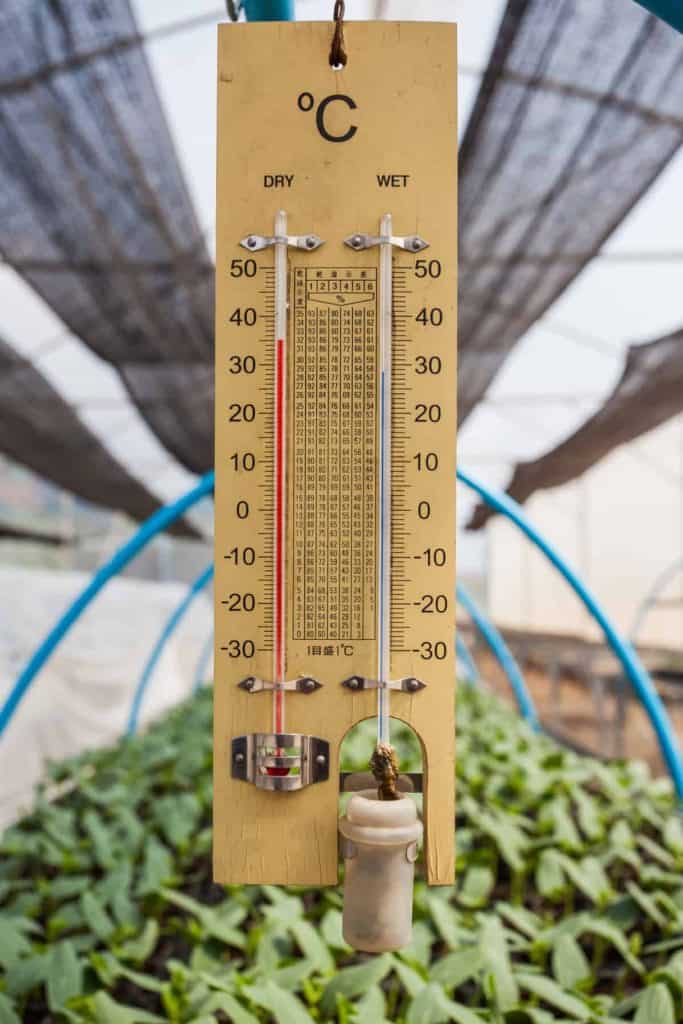
Temperature is just one factor to consider when growing micros
In order for seeds to germinate at all, they need the holy trifecta of proper temperature, humidity/moisture, and oxygen. Once they have germinated, other important factors come into play, namely water, light, and proper nutrients.
Here’s a look at the main growing factors:
- Temperature: Ambient temperature range of 65 to 75 degrees Fahrenheit (18 to 24 degrees Celsius).¹
- Humidity: During the blackout phase, micros like it humid. Aim for levels between 40 to 60 percent.¹
- Oxygen or airflow: During germination, seeds require oxygen to grow. Once germinated, fresh airflow helps to promote vigorous growth. It also wicks away excess moisture on stems and leaves.
- Nutrients: You can get nutrients from the potting soil mix, or from added organic fertilizer. It’s especially important to provide nutrients to micros with longer growing cycles such as most herbs.
- Light: All microgreens or shoots require light to kickstart photosynthesis. (The exception is corn shoots, which taste best in the absence of light).
- Water: Once exposed to sunlight or artificial grow lights, you’ll notice your seedlings get thirsty. Prevent your greens from drying out by bottom watering.
Why temperature matters during germination
When you buy a package of dry seeds, they’re dormant. When you introduce moisture and warmth, you’re essentially signaling to the seed to wake up and begin its new life cycle. Without the proper temperature and right levels of moisture, the seed remains sleeping and will fail to germinate.
Improper humidity and temperature can cause a number of issues with indoor gardens.
Too cool?
The most obvious problem caused by cool temperatures is that the seeds either will take longer to germinate or will not germinate at all. Cooler room and soil temps will negatively impact germination rates. You may notice that only a small fraction of microgreen seeds will grow.
Cooler room temps will add a few more days to the growing cycle. Micros may take longer to reach their desired height, and it may take longer for their leaves to unfurl.
While this might not be a big deal if you’re just growing microgreens at home, it’s a much bigger deal if you are growing micros for profit. With the right growing conditions, many commercial growers can pinpoint to the day when their crop is ready to harvest.
Too warm?
In some cases, higher humidity combined with high temperature can lead to plant illnesses, which is something nobody wants.
When excess warmth combines with excess moisture (and insufficient air circulations), this leads to the development of mold growth or fungus issues.
The takeaway: The aim is to strike a Goldilocks balance that’s neither too warm, nor too cold, but just right.
Room (ambient) temperature vs. soil temperature
So far, I’ve mentioned the importance of room temperature, but let’s not forget to talk about soil temperature. Sometimes the difference between room or ambient temperature and the soil temperature can vary greatly—especially if you’re growing micros outdoors as the ground is just thawing.
When growing indoors, there’s not usually much of a difference of more than a few degrees between room temp and soil temperature.
Still, it’s important to provide consistent temperatures throughout the various stages of seedling growth.
To measure soil temp, insert a thermometer into the soil (or soilless) growing medium to take a reading. If you’re using a grow mat, you can take a reading using an infrared thermometer if you have one handy.
Tip: Be mindful of where you keep your growing tray during germination. Keeping it on or near a heater can warm things up, but you don’t want to “cook” the seeds. Conversely, keeping your tray near a drafty window or vent can cool things down quickly.
What temperature do microgreens need to grow? Here’s what you need to know
What’s the best temperature to grow micros?
The recommended room temperature for growing microgreens is between 65 and 75 degrees Fahrenheit (18 and 24 degrees Celsius). This is a broad range that most households can accommodate. Aim for a sweet spot of 70 degrees Fahrenheit (21 degrees Celsius) if you want to keep things simple.
If you want to get even more specific, the University of Illinois Extension states that microgreens have an optimum ambient temperature range between 70 and 75 degrees Fahrenheit (21–24 degrees Celsius). Soil temperature would ideally fall between 73 and 75 degrees Fahrenheit (23–24 degrees Celsius).²
What temperature is too cold for microgreens?
If temperatures fall below 65 degrees Fahrenheit (18 degrees Celsius) as a general guideline, you will find your seeds will have a hard time germinating. Keep in mind that different types of seeds have different cold or frost tolerances.
You may need to introduce a heating mat to warm up the chilly atmosphere.
What temperature is too hot for microgreens?
Generally, temperatures above 75 degrees Fahrenheit (24 degrees Celsius) will increase the chances of mold or fungal problems and may be inhospitable to growing these tiny greens. Remember that some warm-season crops can tolerate higher temps.
If you’re growing indoor microgreens during the hot summer months, you may need to control the temperature by bringing your tray into a basement or a cooler room. Using a fan to boost air circulation can help to wick away excess water from leaves and stems.
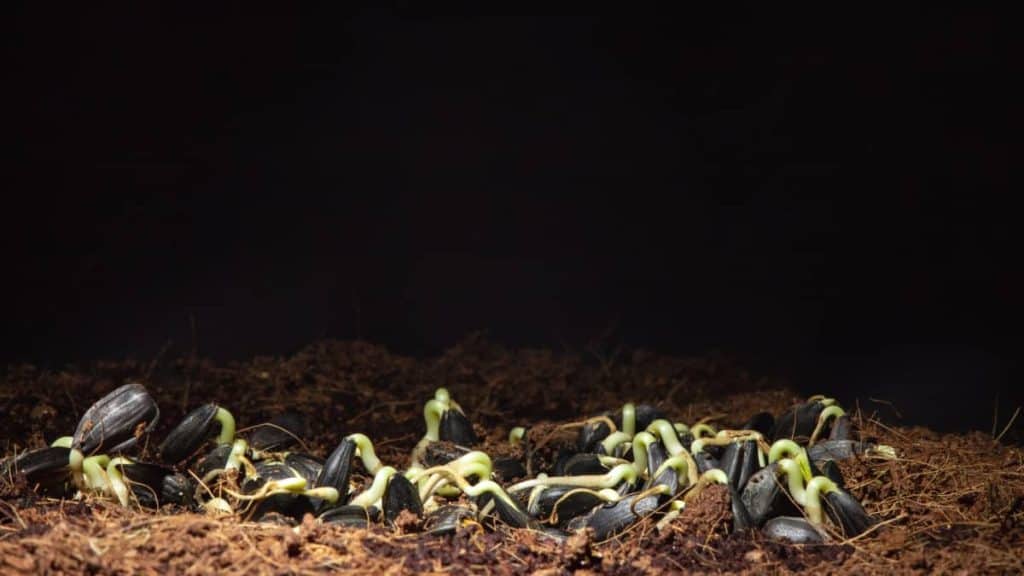
Credit: Deposit Photos
Not all seeds require the same temperature
Some types of seeds will tolerate cooler temperatures. This includes cool-season crops of which many are Brassicas. This includes broccoli, cabbage, and kale. Onions, peas and many types of lettuce also do fine in cooler temperatures. You may find that growing Brassicas in winter months works well with your indoor environmental conditions.
On the flip side, warm-season crops need more warmth, which would work well during the summer months. This includes corn and amaranth microgreens, and many herbs.
To give you an idea of the varying optimum temps, here’s a growing chart.
Table of Optimum Temperatures for Microgreens Seeds
| Seed | Optimum Range (Fahrenheit) | Optimum Range (Celsius) |
|---|---|---|
| Beet | 50 to 85 | 10 to 29 |
| Broccoli | 45 to 85 | 7 to 29 |
| Cabbage | 45 to 95 | 7 to 35 |
| Celery | 60 to 70 | 16 to 21 |
| Chard | 50 to 85 | 10 to 29 |
| Lettuce | 40 to 80 | 4 to 27 |
| Onion | 50 to 95 | 10 to 35 |
| Parsley | 50 to 85 | 10 to 29 |
| Spinach | 45 to 75 | 7 to 24 |
Do I need a heat mat under my microgreens?
It depends on what you’re growing. In general, heat mats are useful for certain types of seeds, particularly the ones that benefit from being germinated at a higher than normal temperature.
If you keep your thermostat stable at around 70 degrees Fahrenheit (21 degrees Celsius) you should be okay without a heating mat. That said, a heat mat can come in handy.
For example, heat mats are great for starting seedlings off if you live somewhere that will be experiencing cold weather during the growing season. If you live in a place that will not have particularly cold weather, a heat mat will be unnecessary.
Once your seeds have sprouted and are showing steady growth, you can remove the heat mat, and place your trays into natural light or an artificial light source.
Ideal temperatures for different growing phases
The main stage at which you really want to “baby” your greens is during the blackout phase (germination). So keep humidity levels high by placing a cover on the grow tray to create a greenhouse effect. And try to keep the temperature as consistent as possible, within the ranges outlined above.
Once micros have sprouted, they can withstand temperature fluctuations of several degrees and still be fine. Keep microgreen seedlings at cooler temperatures—as low as 60 degrees Fahrenheit (16 degrees Celsius).
Happy growing!
👉If you like this post, see our Complete Guide to Growing Microgreens at Home.
Would you like more timeless tips via email?
Fun tips to help you live an independent, self-sustaining lifestyle. Opt-out at any time.


References
- Agri-Facts, Commercial Microgreens: Production and Best Practices, https://www1.agric.gov.ab.ca/$department/deptdocs.nsf/all/agdex15965/$file/268_18-1.pdf. Accessed January 2023.
- University of Illinois Extension, Microgreens – year-round edible greens to grow at home, https://extension.illinois.edu/sites/default/files/dkk-mg-microgreens-tipsheet.pdf. Accessed January 2023.
- Pennsylvania State University, Seed and Seedling Biology, Table 1. Soil temperature conditions for vegetable crop germination. https://extension.psu.edu/seed-and-seedling-biology. Accessed January 2023.

Author: Josh Tesolin
Josh is co-founder of RusticWise. When he’s not tinkering in the garden, or fixing something around the house, you can find him working on a vast array of random side projects.



